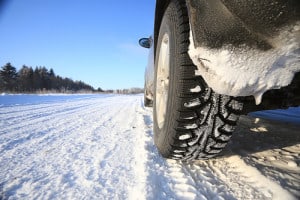
Alaska’s road crews now have real-time information on where winter roads are being buried by snow.
Name of Organization: Alaska Department of Transportation & Public Facilities
Industry: Government
Location: Fairbanks, Alaska USA
Opportunity or Challenge Encountered: When it comes to Alaska, weather matters — a lot. A long, frigid winter is the state’s defining characteristic, spread over an immense geography larger in size than most of the world’s nations. For the Alaska Department of Transportation & Public Facilities (ADOT&PF), it’s a matter of keeping Alaska’s 5,600 miles of roads, 836 bridges, 242 airports, 758 public buildings, 21 harbors, and 10 vessels in the Alaska Marine Highway System fleet open and running — no matter what icy or snowy conditions hit.
The challenge is predictability. “Microweather abounds in Alaska; it can be snowing in town, but 24 miles away over a mountain, the sun will be shining,” a case study relates. ADOT&PF station managers would either assess the weather from standard precipitation-based forecast models to decide whether to deploy snowplows, or through sending teams out to see what’s happening with their own eyes. That’s because “sending plows out—and buying sand and salt—when they’re not needed is a major expense, but not sending them out when needed puts Alaskan drivers at risk.”
“Collectively, we have decades of weather forecasting experience, but many times we were just guessing,” Dan Schacher, maintenance superintendent in the ADOT&PF Northern Region, is quoted as saying. While ADOPT&PF works closely the National Oceanic and Atmospheric Administration for relevant data, NOAA can’t supply the “hyper-local forecast data” that ADOT&PF needs for road treatment and snowplowing decisions.
How the Opportunity was Met: In 2013, ADOT&PF invested in a road weather information system (RWIS), a network of roadside telemetry stations that track both surface and subsurface temperatures in addition to air temperature, dew point temperature, relative humidity, wind speed and direction, precipitation, and other conditions. RWIS data is transmitted via cellular network to a cloud-based database called the Maintenance Decision Support System (MDSS), which ADOT&PF station managers use to determine whether to send out trucks and what they should be equipped with. The MDSS also incorporates NOAA atmospheric weather and forecast data.
However, even the RWIS left a lot of holes in ADOT&PF’s view of the impact of potential weather events. “Our decisions were driven by fixed-location atmospheric readings, but we needed mobile pavement data to give us insight on what was happening on thousands of miles of roadway.” To provide a more complete picture of conditions, ADOT&PF turned to Fathym, an IoT solutions provider, to implement a weather-tracking solution called WeatherCloud. The solution relies on mobile sensors that are placed on the interior windshield and exterior bumper of maintenance vehicles and track road temperature, humidity, precipitation, and even wiper frequency.
See also: Case study — From farm to cloud in real-time
WeatherCloud sensors mounted on the vehicle dashboard (Skypack) and bumper (Roadpack) feed pavement and local weather conditions — not visible to satellites — to ADOT&PF truck drivers and station crews. WeatherCloud is designed to make calculations based on precipitation combined with pavement type and road conditions, leading to a more accurate, hyper-local forecast. “Truck-mounted WeatherCloud sensors collect data on road conditions and weather and transmit it, via a Bluetooth connection, to an app running on a smartphone in the truck,” the case study states. “If the vehicle is within cellular range, the data is immediately uploaded to Microsoft Azure cloud, where it is analyzed and used to create a dashboard showing current, hyper-local road conditions. It’s also fed into the forecast model used in Alaska’s Maintenance Decision Support System.”
Benefits of this Initiative: The real-time data streaming from WeatherCloud helps ADOT&PF be more proactive. When a freezing rain event moved into the Fairbanks region in an area lacking RWIS coverage, Schacher’s team was able to rely on mobile WeatherCloud data to determine whether to send the salt and plows out. “I was much more aggressive in my response than I would have been without the WeatherCloud data, and we avoided any accidents,” he said.
The system’s data not only helps assure greater road safety, but it also helps the organization save hundreds of thousands of dollars each year in resource usage. Recently, ADOT&PF had its budget cut by 26 percent, but with the extra weather intelligence gleaned from WeatherCloud, Schacher’s team has been able to deliver the same services with fewer resources. For example, when NOAA put out two high-alert forecasts for an upcoming weather event, Schacher was able to employ WeatherCloud data to determine that “the weather would not be as severe as predicted and told my crews to stand down. Sure enough, the predicted storms didn’t materialize. I saved the state a substantial sum by not deploying trucks unnecessarily.”
The system can be applied year-round as well. During the summer, ADOT&PF paves, chip-seals, stripes, and performs other maintenance tasks. Crews must dodge rain and even snow flurries in the summer, and they use WeatherCloud data to find optimum work windows on specific stretches of road.
(Source: Microsoft)




























